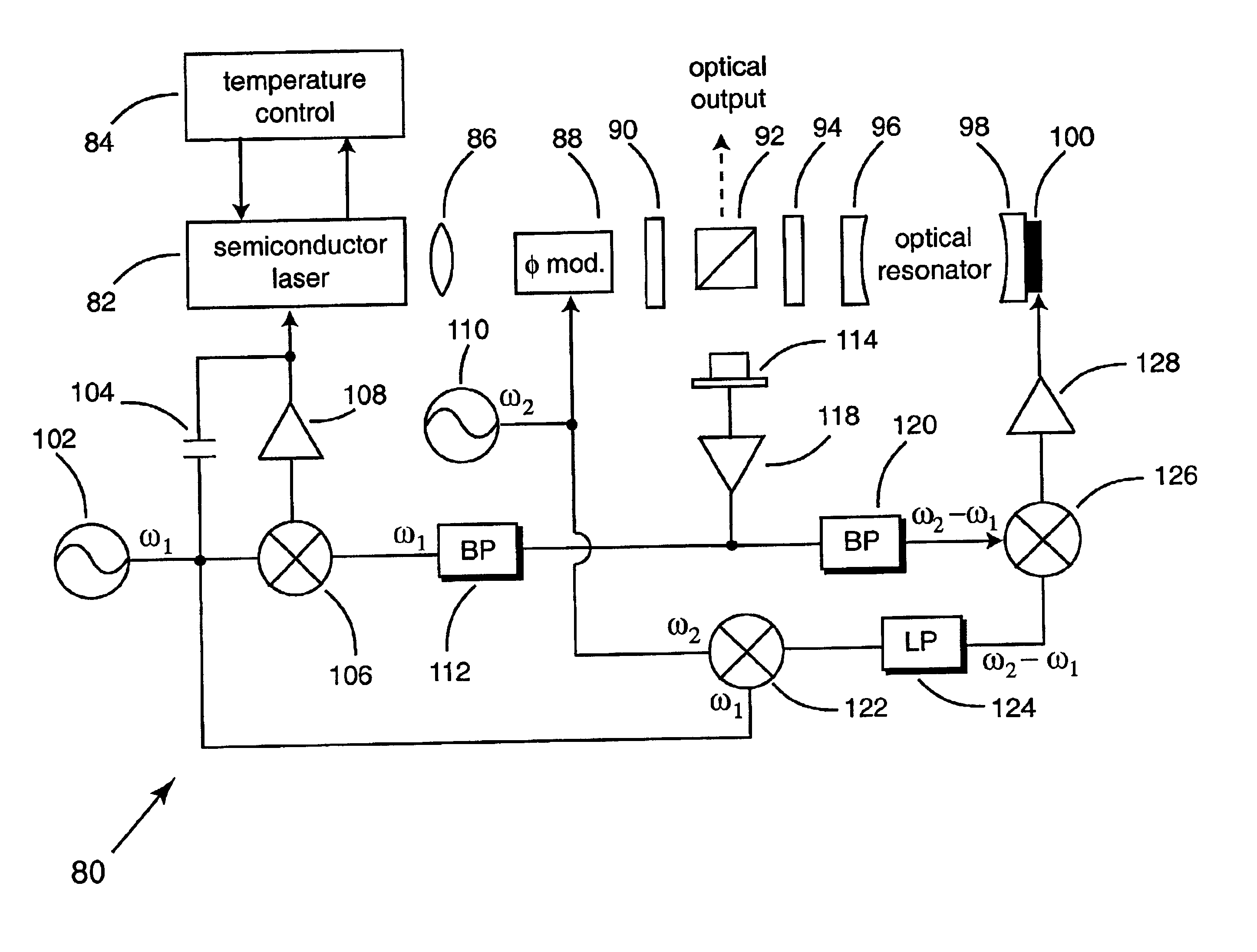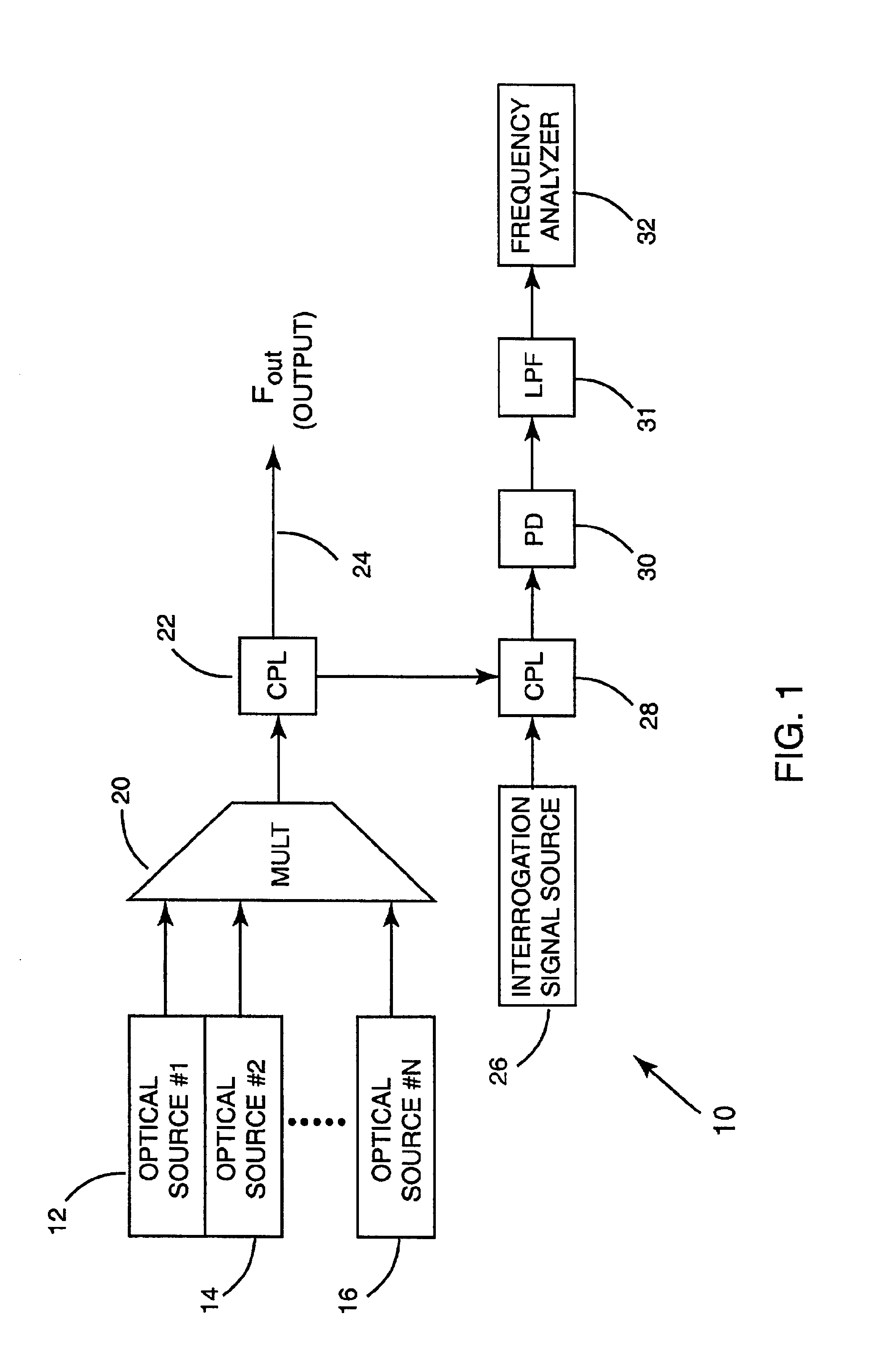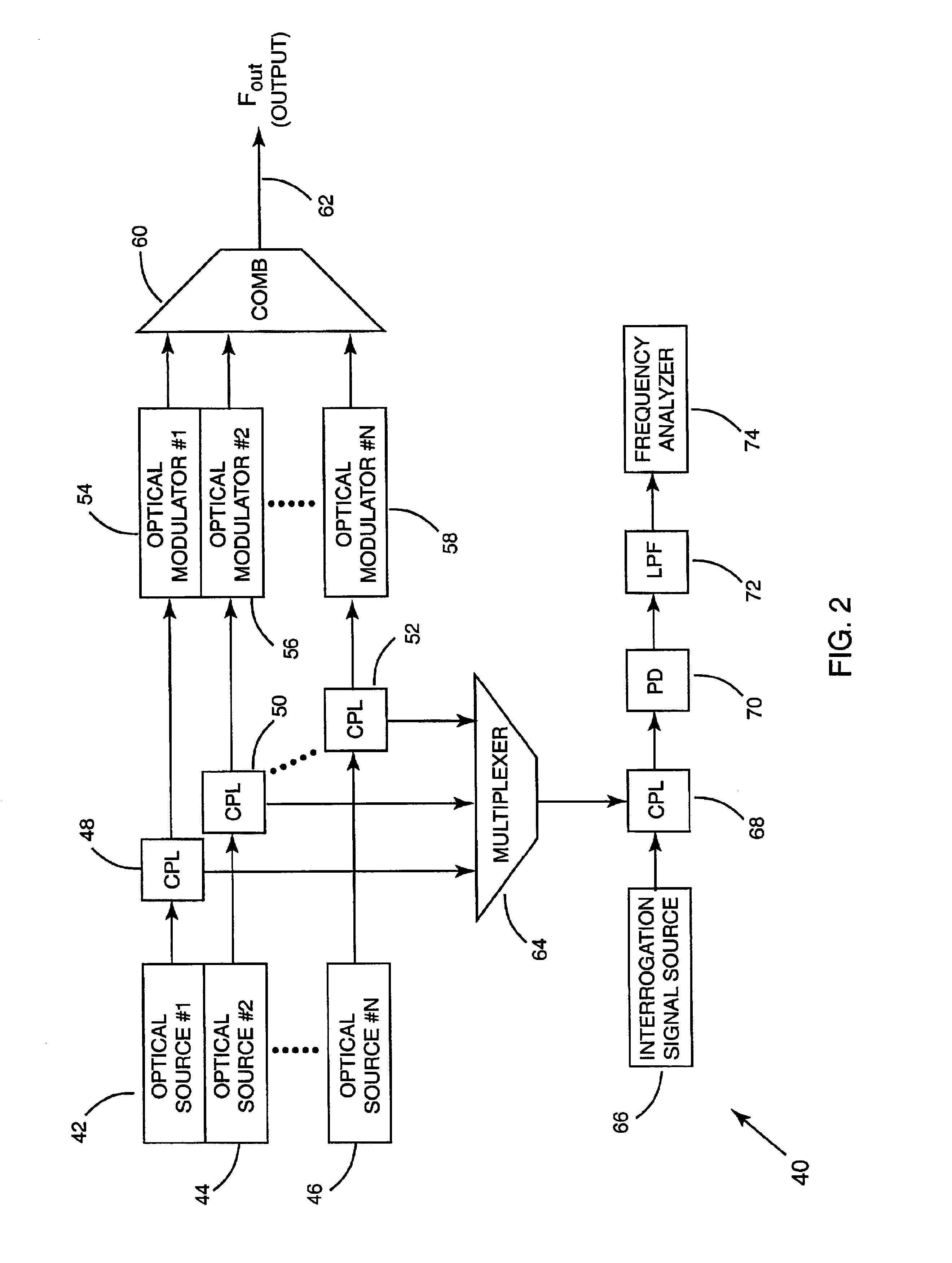Method and apparatus for measuring a frequency of an optical signal
a technology of optical signal and frequency, applied in the field of optical communication system, can solve the problems of limited spectrum utilized for transmission signal to a small fraction of occupied bandwidth, large error in absolute frequency allocation, and fundamental limitations in the increase of spectral efficiency
- Summary
- Abstract
- Description
- Claims
- Application Information
AI Technical Summary
Benefits of technology
Problems solved by technology
Method used
Image
Examples
Embodiment Construction
FIG. 1 depicts a system 10 for measuring and stabilizing the frequency of each individual optical carrier component contained in an output signal Fout comprising a plurality of optical carrier frequencies. In such an embodiment, the optical carrier frequencies may be locked to adjacent modes of a reference resonator (or to multiple reference resonators that are maintained at a common free spectral range). As shown, signals from a number of optical sources 12, 14, 16 may be combined in a multiplexing filter 20 and transferred to a user (not shown) at a remote location through an optical waveguide 24 (e.g., an optical fiber).
The optical signal generation system 10 may be one-way or two-way communications system that carries information (e.g., telephone, Internet, Intranet, Ethernet, CATV, etc.) using a number of optical carriers. The sources 12, 14, 16 may be continuous wave reference frequencies or they may be modulated in the optical communications system application. Further, the f...
PUM
 Login to View More
Login to View More Abstract
Description
Claims
Application Information
 Login to View More
Login to View More - R&D
- Intellectual Property
- Life Sciences
- Materials
- Tech Scout
- Unparalleled Data Quality
- Higher Quality Content
- 60% Fewer Hallucinations
Browse by: Latest US Patents, China's latest patents, Technical Efficacy Thesaurus, Application Domain, Technology Topic, Popular Technical Reports.
© 2025 PatSnap. All rights reserved.Legal|Privacy policy|Modern Slavery Act Transparency Statement|Sitemap|About US| Contact US: help@patsnap.com



